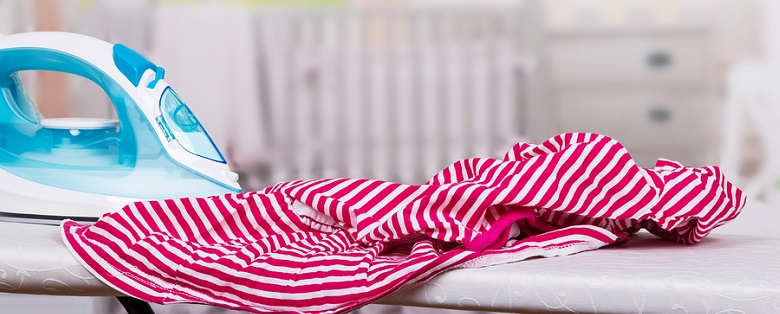
There is nothing quite like a freshly pressed shirt or blouse to make the wearer look well-groomed and prepared. It may seem like a modern concept but in actuality, ironing clothing is not a new idea. People have been doing it for thousands of years, in many different ways. Today, people may rarely pick up an iron unless their dryer is in need of appliance repair and clothing comes out wrinkled, but the importance of fresh-looking clothing has never changed.
Whether waiting on home appliance repair or just making sure those dress shirts look crisp and freshly pressed, ironing is something that relates all of us to the royals of the past!
The First Clothes Pressers
Believe it or not, the Chinese have been pressing clothing since the 1st century B.C. Although it is unknown when the technique was first developed, the process of ironing clothing has been evidenced in Chinese artifacts and records that date back that long, to a time when people used pans filled with hot coals to flatten and press fabrics. Artwork and tapestry designs depicting people ironing clothing suggest that this was something that only the wealthy did or had done for them.
Early Fabric Pressing Tools
Irons have been made in many different materials and called many different things. Although the Chinese were already using a device similar to today’s irons, other cultures created linen smoothers and slickstones made of glass and stone, and rollers made of wood. Screw presses designed to flatten damp fabric were developed by the Romans during Medieval times, as were fabric frames and stretchers, all of which served the basic purpose of getting the wrinkles out of fabric. In homes, people used pressing boards called mangles, and various paddles and similar objects to get fabrics smooth and pressed.
The Development and Progression of the Iron
The biggest change in fabric pressing came about in the Middle Ages, with the invention of the flat iron, also called a smoothing iron. Designed by a blacksmith, this flat piece of iron steel had a handle on it, and is was used to iron fabric once the flat bottom was heated on a fire or stove. This design was improved to add wooden handles to make handling the hot iron easier, and it stayed in until the invention of the box iron, also known as the coal iron or ironing box. This iron was constructed from a metal box with a flat bottom, into which coals or other materials were burned inside to keep the iron hot.
Box irons were changed and improved over time by various cultures, but the idea was an efficient one; they remained in use for hundreds of years. Box irons gradually evolved and improved, with some later versions even heated by burning liquid fuels inside them despite the considerable risk. The box iron was also the predecessor to today’s steam iron, a development that came about in the early 1900's, once electric irons were invented. Today, most pressing of clothing is done with electric steam irons, non-steam electric irons, and clothes pressing machines that utilize a combination of steam and heat as necessary.
Even though many people may not iron clothes themselves at home today, there is no doubt that freshly pressed clothing looks great. It is interesting to know that this simple process is an idea that has existed for thousands of years, started in ancient China and practiced by royals and the wealthy to help them look their best. So the next time the dryer is in need of appliance repair, consider how people centuries ago ironed their clothing. Today’s simple-to-use electric irons are a much better alternative than hot pans and ironing boxes to keep clothes looking their best, or while waiting for home appliance repair!
Need Home Appliance Repair in Lubbock TX?
Appliance Repair Experts Can Help With Repair Needs!
Call (806) 416-8642!
Additional Articles:
Questions to Ask About Repairing or Replacing A Major Appliance!
When Replacing Ovens - Freestanding or Slide-In?
Dishwashers - How to Best Clean Them!
